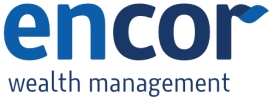The Sharpe Ratio is used to calculate risk-adjusted return. Nobel laureate William F. Sharpe developed the ratio, which has become the industry standard for such calculations.
Formula:
(Average Return of a Portfolio – Average Return of the Risk-Free Rate)/standard deviation of the Portfolio
The Sharpe ratio is the average return earned in a time period in excess of the risk-free rate per unit of volatility or total risk. Generally, the higher the Sharpe ratio’s value, the more attractive is the risk-adjusted return. Behind the mechanics of the ratio, the performance associated with risk-taking investment is isolated by subtracting the risk-free rate from the mean return. For example. a portfolio deploying a “zero risk” investment strategy, such as the purchase of U.S. Treasury bills (for which the expected return is the risk-free rate), has a Sharpe ratio of exactly zero.
Modern Portfolio Theory suggests that adding assets to a diversified portfolio that have correlations of less than one with each other can reduce portfolio risk without sacrificing return. Such diversification would likely increase the Sharpe ratio of a portfolio.

